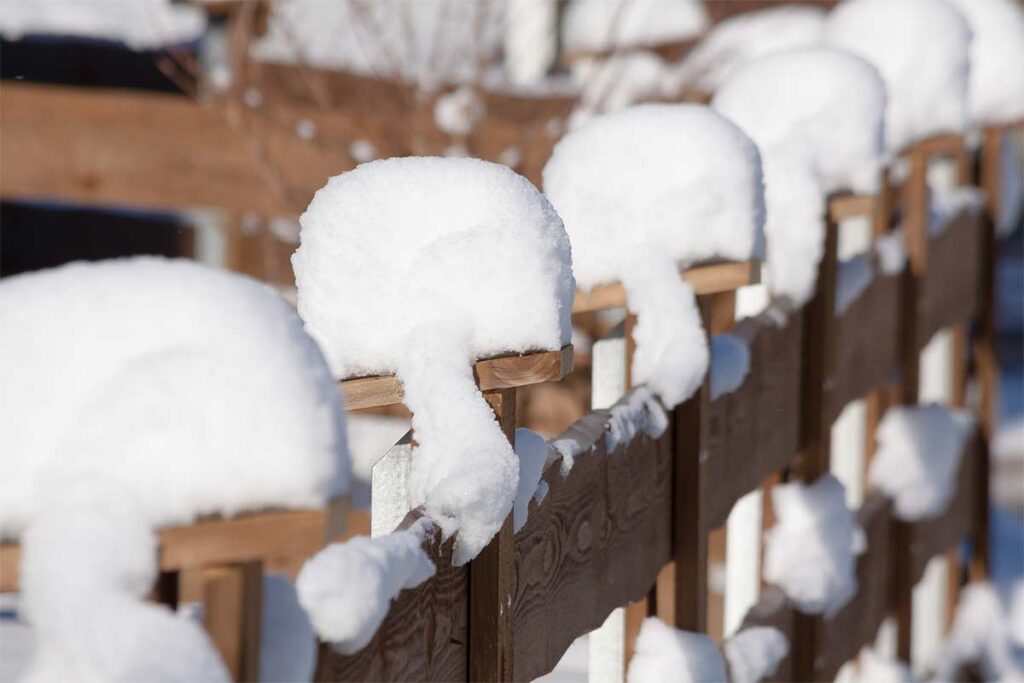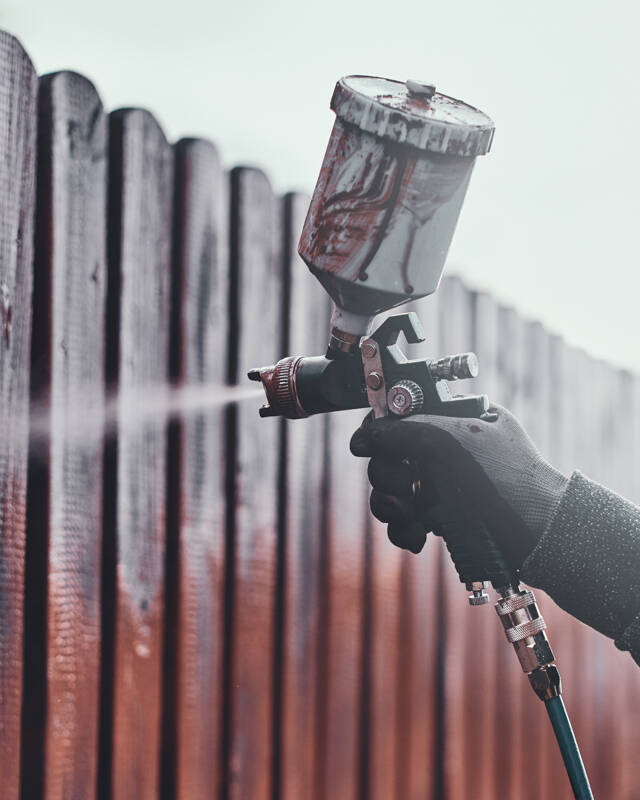Are you looking to winterize your fence in a cold climate? Well, you’ve come to the right place! In this article, we will discuss the importance of fence winterization and how it can protect your fence during the harsh winter months. We’ll also provide you with some valuable tips and techniques on how to properly winterize your fence. So, grab a cup of hot cocoa and get ready to learn all about fence winterization!
When winter arrives, it brings along freezing temperatures, snow, and ice, which can all have a damaging effect on your fence. Without proper winterization, your fence may experience issues such as cracking, warping, or even collapsing. That’s why it’s crucial to take the necessary steps to protect your fence and ensure its longevity. In this article, we will discuss various methods you can use to winterize your fence, including applying sealant, adding insulation, and clearing snow buildup. We’ll also provide you with some helpful tips on how to prepare your fence for the winter season, such as trimming overhanging branches and checking for any loose or damaged parts. By the end of this article, you’ll be equipped with all the knowledge you need to effectively winterize your fence and keep it in top shape throughout the winter months. So, stay tuned for more detailed information on fence winterization!
Fence Winterization for Cold Climates
As winter approaches, it’s important to prepare your fence for the harsh cold weather conditions that lie ahead. Winter can be particularly tough on fences in cold climates, with the combination of freezing temperatures, snow, ice, and strong winds. Proper winterization of your fence not only helps to protect it from damage but also ensures its longevity. In this article, we will guide you through the process of winterizing your fence, step by step.

Understanding the Importance of Winterizing Your Fence
Winterizing your fence is essential for several reasons. First and foremost, it helps to prevent any potential damage that may occur due to the extreme weather conditions. Freezing temperatures can cause materials like wood to contract and expand, leading to cracks, warping, and even complete failure of the fence. Additionally, the weight of snow and ice can put excessive strain on the structure, leading to weakened posts or collapse. By taking the necessary measures to winterize your fence, you are ensuring its durability and saving yourself the hassle and cost of repairs.

Preparing Your Fence for Winter
Before the winter weather arrives, it’s important to prepare your fence by following a few simple steps. Start by removing any debris or leaves that may have accumulated around the base of the fence. This helps to prevent moisture buildup and potential rot. Next, give your fence a thorough cleaning using a mild detergent and water mixture to remove any dirt or grime. This step is particularly important for fences made of materials like vinyl or metal that can be easily damaged if not properly maintained.
Inspecting and Repairing Damaged Fence Posts
One of the critical aspects of winterizing your fence is to inspect and repair any damaged fence posts. Start by visually examining each post for signs of decay, rot, or cracks. These issues can worsen during the winter months, leading to instability and potential collapse. If you notice any problems, it’s essential to address them immediately. Repairing damaged posts can involve anything from reinforcing them with braces to replacing them entirely. Remember to choose rot-resistant materials for any replacements to ensure the longevity of your fence.
Replacing Broken or Rotting Fence Boards
In addition to checking the posts, it’s essential to inspect the fence boards for any signs of damage. Boards that are broken, rotted, or warped need to be replaced before winter sets in. These damaged boards not only compromise the integrity of your fence but also provide opportunities for moisture to seep in, leading to further deterioration during the colder months. Take the time to remove any damaged boards and install new ones, ensuring a sturdy and weather-resistant barrier.
Strengthening Fence Panels for Winter
Fence panels are particularly susceptible to damage during winter due to their large surface area. Before the winter weather arrives, take the time to reinforce the panels to prevent them from becoming loose or collapsing. Start by tightening any loose screws or nails and replacing any that are missing. Consider adding additional support by installing cross braces or diagonal supports to provide extra stability to the panels. This extra reinforcement will help your fence withstand the strong winds that often accompany winter storms.
Protective Coatings and Sealants for Cold Weather
Applying protective coatings and sealants to your fence can significantly enhance its ability to withstand the winter weather. For wooden fences, consider using a water repellent or stain that is designed to withstand freezing temperatures. These coatings create a barrier that helps to prevent moisture absorption and subsequent damage. Additionally, metal fences can benefit from a rust-resistant paint or coating to prevent corrosion caused by the exposure to snow, ice, and salt.
Choosing the Right Winter-Resistant Materials for Fence
When it comes to winterizing your fence, selecting the right materials is paramount. Some materials are naturally more resistant to the harsh conditions of cold climates. For example, cedar and redwood are excellent choices for wooden fences as they contain natural oils that make them more resistant to rot and decay. Vinyl and metal fences also offer durability and resilience in cold weather. Take into consideration the climate and choose materials that are best suited for your specific location.
Applying Insulation to Your Fence
Insulating your fence can be particularly beneficial in colder climates. This step involves adding a layer of insulation to the fence panels and posts to help prevent heat loss and reduce the effects of freezing temperatures. Insulation materials such as foam boards or insulated blankets can be attached to the interior side of the fence panels. Additionally, wrapping the fence posts with insulating materials, such as foam or fiberglass, can further protect them from the freezing temperatures.
Clearing Snow and Ice from Your Fence
During the winter months, it’s essential to regularly clear snow and ice from your fence. The weight of accumulated snow or ice can put excessive strain on the structure and potentially cause damage. Use a shovel, broom, or snowblower to gently remove snow from the fence panels and posts, taking care not to damage the surface. Avoid using sharp tools or excessive force that may cause cracks or breakage. Regularly removing snow and ice will help to maintain the integrity of your fence throughout the winter season.
Preventing Frost Heave and Ground Movement
Frost heave is a common issue in cold climates where the freezing and thawing of the ground can cause the fence posts to shift or even be pushed out of the ground. To prevent this, it’s important to ensure that the fence posts are securely anchored. Consider using concrete footings to provide stability and prevent ground movement. Dig the post holes deeper than the frost line and fill them with concrete, ensuring that the posts are set firmly in place.
Installing Snow Fences to Prevent Drifts
Snow fences can be a useful addition to your winterized fence strategy, particularly if you live in an area with heavy snowfall and frequent drifting. Snow fences act as barriers, redirecting the wind and causing it to drop the snow before it reaches your fence or property. By strategically placing snow fences upwind of your fence, you can significantly reduce the amount of snow that accumulates and potentially causes damage. Consult with a professional to determine the optimal placement of snow fences based on your specific property’s layout.
Dealing with Winter Pests and Wildlife
Winter can bring unwanted visitors to your fence, including pests and wildlife seeking shelter and warmth. Take preventive measures to discourage these intruders from damaging your fence. Trim any branches or vegetation near the fence that may provide access points or attract wildlife. Consider installing deterrents such as motion-activated lights, ultrasonic devices, or even physical barriers to prevent animals from causing damage. Regular inspections and prompt repairs will also help to minimize any vulnerabilities that may attract pests or wildlife.
Maintaining Your Fence During Winter Months
Even with the best winterization efforts, it’s crucial to continue maintaining your fence throughout the winter months. Regularly inspect your fence for any signs of damage and address them as soon as possible. Keep your fence clean by periodically removing any debris or ice that may accumulate. Consider using approved ice melt products to prevent the buildup of ice on your fence, taking care to choose products that are safe for the material of your fence. By staying proactive, you can ensure the health and longevity of your fence during the cold winter season.

Conclusion
Winterizing your fence is a crucial step in protecting it from the harsh conditions of cold climates. By properly preparing your fence for winter, inspecting and repairing any damage, strengthening its structure, and applying appropriate protective coatings, you can ensure its durability and longevity. Regular maintenance and clearing of snow and ice will further contribute to your fence’s health. With these steps, your fence will not only survive the winter but also continue to serve its purpose for years to come. Remember, a well-maintained and winterized fence not only adds beauty to your property but also provides security and privacy even in the coldest months of the year.